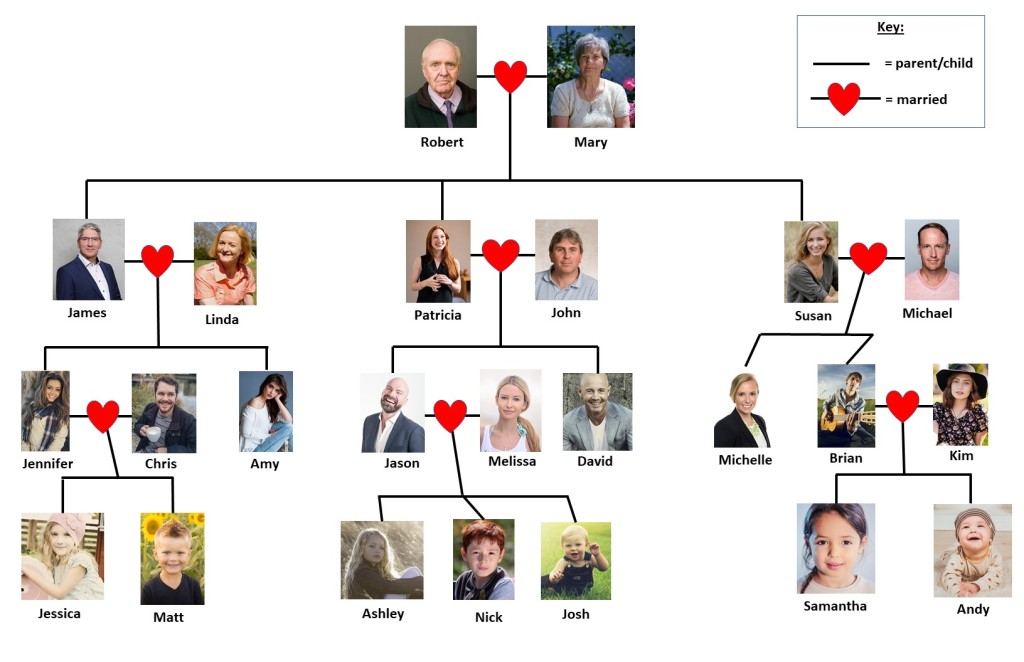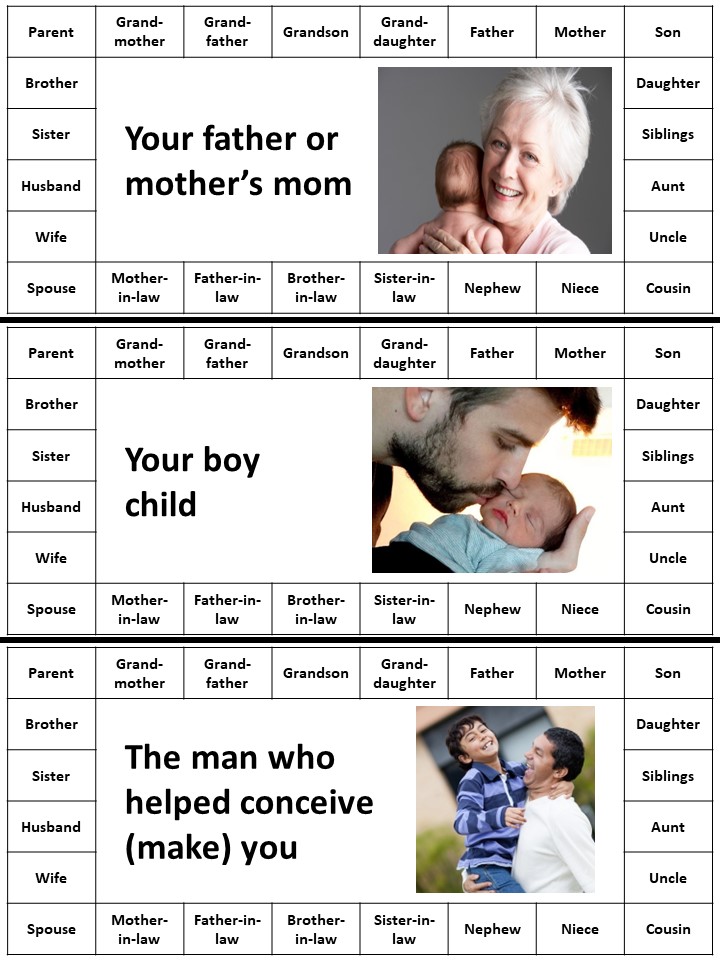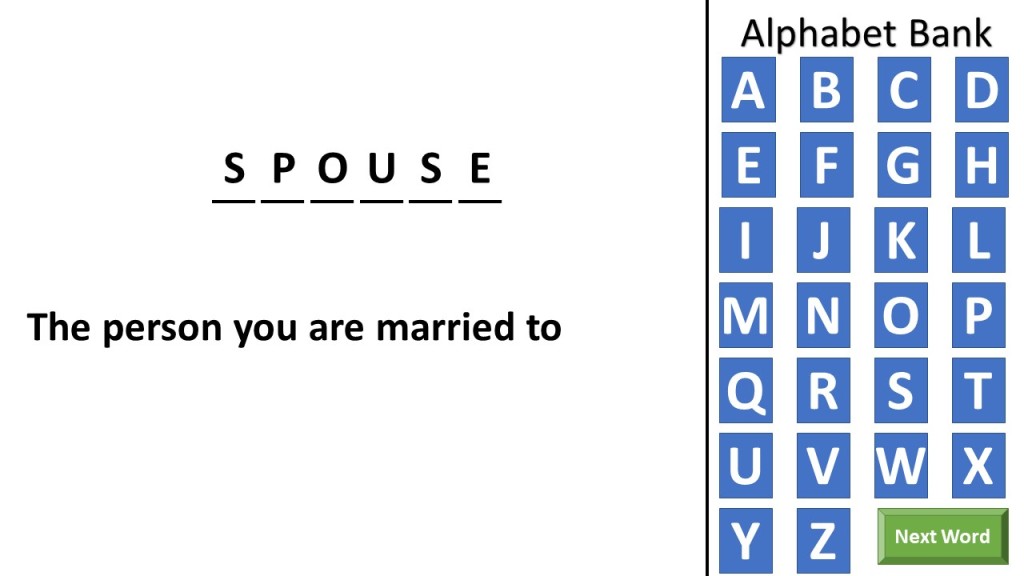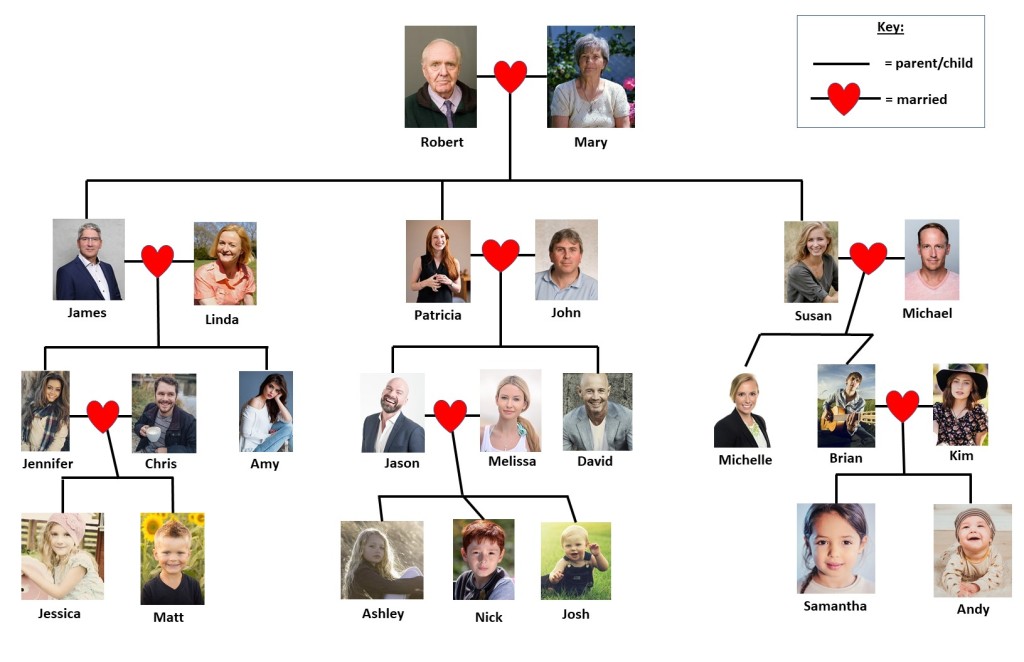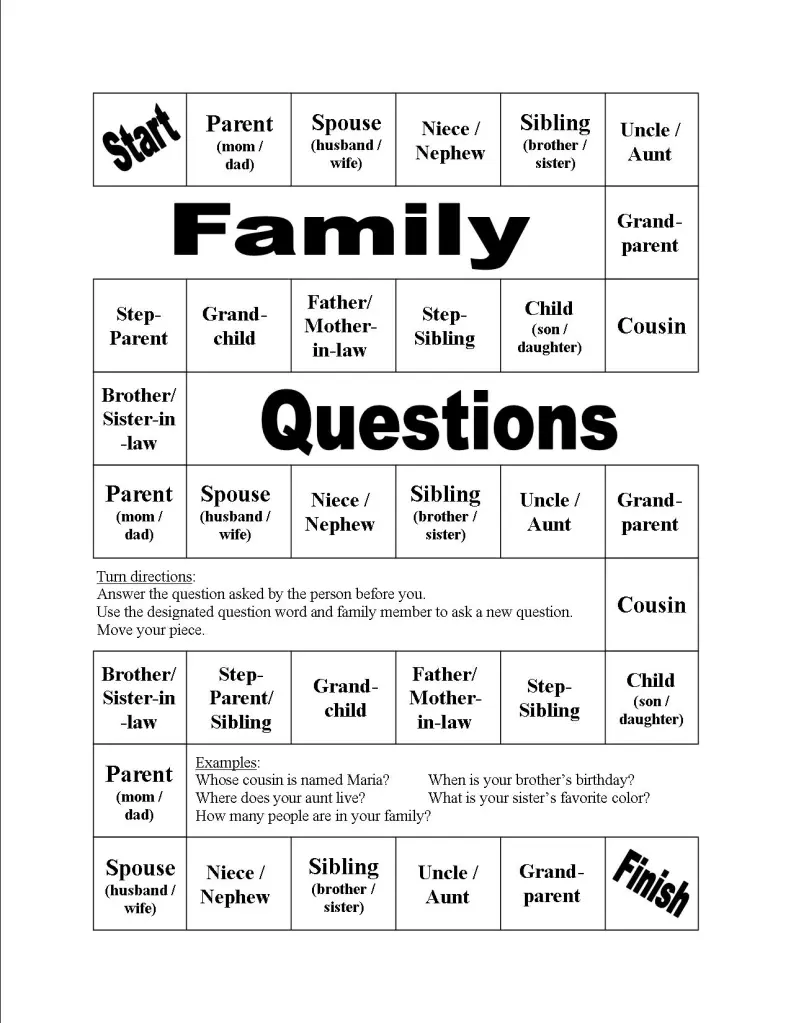Family relationship vocabulary can be very difficult to teach. The definitions are complicated, and explaining the various relationships requires the very vocabulary you’re trying to teach. Thankfully, I’ve been able to develop some activities over the years that have helped my students learn the large amount of vocabulary they need for this topic.
Family Relationship Vocabulary Activities
I started with a set of my standard vocabulary activities. As I’ve explained previously, I try to always start with the same set of activities, changing only the vocabulary. This allows students to concentrate on the vocabulary and definitions rather than the activity directions. The first couple of times we do a particular type of activity, it takes some explaining and extra assistance on my part, but after that, all I have to do is pass out the materials, and students are able to get straight to work.
The types of activities I always include in my vocabulary packs are:
- sort cards (we use these for a variety of activities)
- clip cards
- Match Up Cards (go with the boards my father specially designed for me; the plans are free in the linked post)
- Scrambled Words
- CD Spinner for various games (go with the spinner stands my father designed for me; the plans are free in the linked post)
- Worksheets (cut-and-paste, crossword, cloze, word search, alphabetical order, assessment)
I generally only use all of the activities when I am doing a full vocabulary unit. With my adult classes, we generally only spend two or three lessons on a particular theme, so I pick and choose which activities will best help my students and fit within the time constraints of a given curriculum.
Family Relationships Guess the Word PowerPoint Game
Fortune Hunting is still my students’ favorite triggered animation PowerPoint game, but Guess the Word is a very close second. This is a Hangman-style game without the potential trauma triggers of the original game. Students choose letters and try to guess the word based on either a picture, a picture and definition, or (as is the case in this version) a definition. You can see a demonstration in this YouTube video. If you want to try making your own game, the directions are in the original post, and the template is available for download under the picture.
Family Relationships Grid Conquest Game
I use a lot of different versions of Grid Conquest. The game is relatively simple: students claim a starting corner and then color in connecting sections as they successfully complete whatever task is required. For this version, though, I needed more than just a set of task cards and the game board (free download below the picture); I also needed a couple of family trees.
Over the years, I’ve found that using a physical family tree with pictures helps students when they are learning family relationship vocabulary. Seeing the relationships is a lot easier than trying to use the very vocabulary you’re trying to learn to describe the relationships! Having two family trees, one with and one without divorce and remarriage, also allows me to narrow or broaden the set of relationships students are learning. More advanced students get practice with terms such as step-brother and second cousin, while beginning students can stick to more basic vocabulary such as sibling and grandmother. I love that I can even use this game in mixed-abilities classes because the play is the exact same no matter which family tree and card set I give the group.
To play, a student draws a card that names a family relationship (brother). The student then looks at the family tree and makes a sentence naming at least two people who are related in that way (David is Melissa’s brother.). If successful, the student is able to color in another section on his/her journey across the board. At the end of the game, students add up the numbers in their colored squares, and the person with the highest number is the winner.
Family Questions Board Game
If you’ve been reading this blog for any length of time, you know I love a game that practices more than one skill. I was working with a new curriculum that taught question words in a unit that was themed around families. Since I knew this particular class needed to review family vocabulary, I decided to make a game that practiced both. I was able to combine several existing resources and templates (the family relationship sort cards, my zig-zag game board, and the question word spinner from my Picture Prompts Board Game), so the game came together quite quickly.
To play, students drew a family relationship card (the sort cards) and spun the spinner. The active student then asked the next student a question, using the question word spun and the relationship shown on the card (What is your grandmother’s name?). After asking the question, the student moved his/her piece the number shown on the spinner. Before drawing and spinning, the next student answered the question asked of him/her. He/she then drew, spun, and asked a question of the next student. Play continued in this manner until someone reached the finish.
After playing the first time, I made a couple of adjustments to the game. First, I created a new set of cards with family relationships on them. This was simply because my students preferred smaller cards. Second, I created a separate board where each square lists a family relationship. Using this game board eliminated the need for the sort cards but removed my ability to customize which relationship vocabulary each group practiced. Since that first time, I’ve chosen which version of the game to use based on class make-up (and sometimes I use both–once again allowing me to use the game in mixed-ability classes).
Conclusion
These activities and games don’t lessen the work required to learn the vocabulary of family relationships, but they do make the process more fun! If you’re interested in trying them all out, the last button will take you to a bundle that will get you access to all of the activities in one download and at a 20% discount. Happy teaching, everyone!

